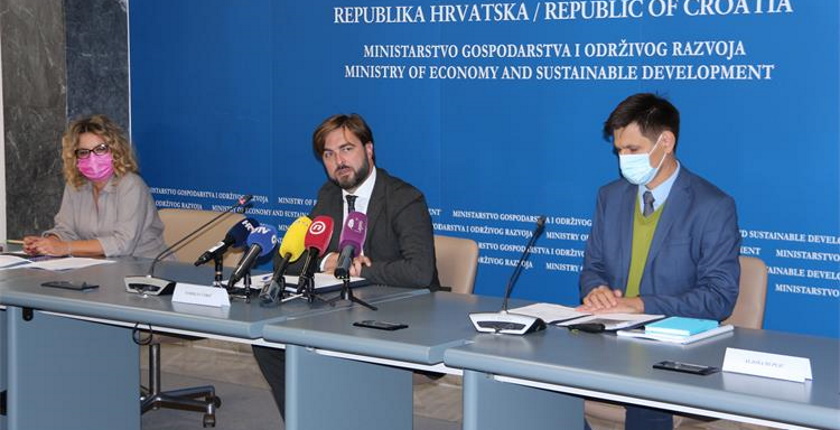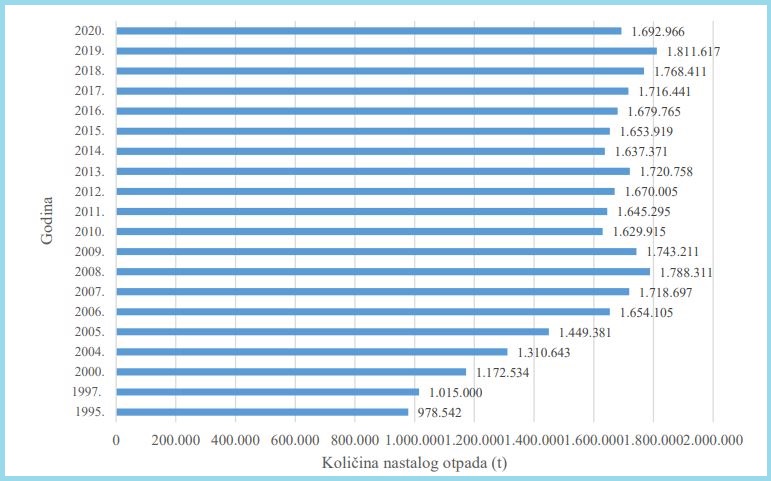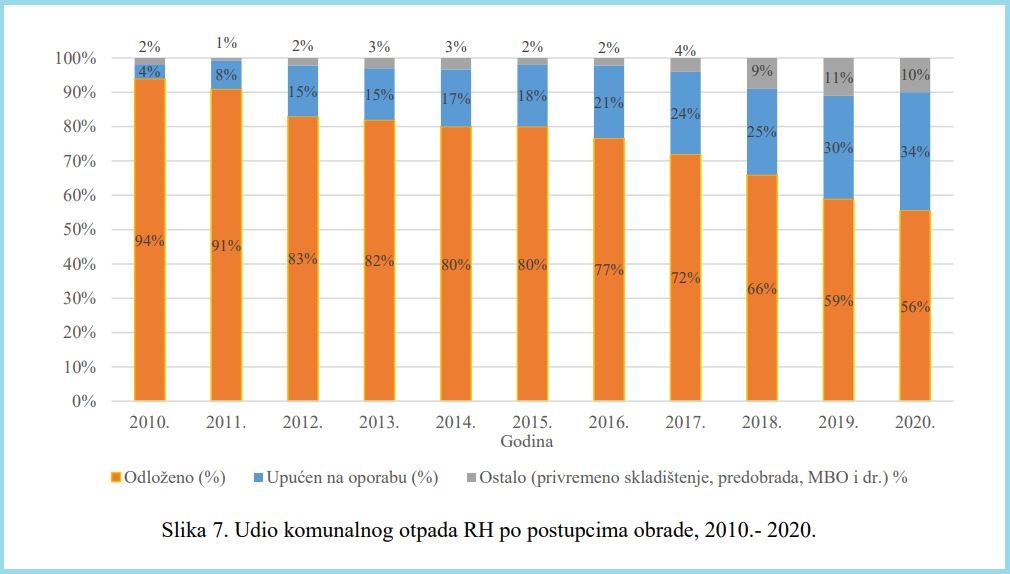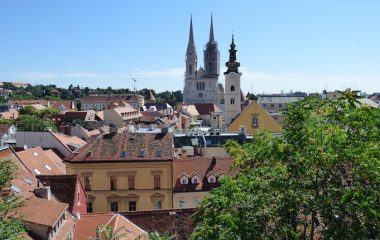
Photo: Ministry of Economy and Sustainable Development
In 2020, Croatia reduced the amount of municipal waste. It increased waste separation and the recycling rate, but the results are partly driven by the COVID-19 pandemic and are still below the set goals.
The data are part of the report on municipal waste for 2020, presented by Minister of Economy and Sustainable Development Tomislav Ćorić, Director of Institute for Environmental and Nature Protection Aljoša Duplić, and Director of the directorate for environmental impact assessment and sustainable waste management Anamarija Matak.
56 percent of municipal waste ended up in landfills in 2020, and the plan is to reduce the level to 25 percent by 2022
According to the report, 1,692,966 tons of municipal waste was generated in Croatia in 2020, which is a decrease of 6.5% from 2019. The annual amount of municipal waste per capita is 418 kilograms.
According to the National Waste Management Plan for the period 2017-2022, Croatia’s goal was to reduce municipal waste by 5% compared to 2015, or 1,571,300 tons, and the target for 2020 was 1,587,840 tons.
In 2020, 941,285 tons of municipal waste were disposed of in landfills or 56% of the total. It is a reduction of three percent compared to 2019, but a lot still needs to be done to reach the 25% set for 2022.

Out of the total municipal waste, 56% was sent to landfills, 34% to recovery (which includes recycling), and 9% to the mechanical-biological waste treatment plants, the report underlines.
Good results driven by reduced work of the service sector due to the pandemic, but also the implemented reforms
The decline in the total amount of municipal waste is explained by the COVID-19 pandemic, which reduced the work of the service sector in 2020 and the consistent implementation of activities to raise citizens’ awareness of their role in creating and preventing waste.
Also, investments were made in infrastructure for waste separation, such as containers for separate collection on households’ doorsteps, the construction of recycling yards, installation of containers for separate collection in public areas, procurement of vehicles for separate collection, equipping sorting facilities.
Another reason for the good results was the introduction of scales in landfills, which is why the data on waste amounts are more accurate, according to the report.
Waste separation rate at 41 percent, the goal was 52

Last year, Croatia also recorded an increase in the waste separation of municipal waste, of four percentage points to 41 percent. However, the target for 2020 was 52, compared to 60 percent for 2022.
The number of municipal units conducting waste separation of biowaste has increased by 20
In 2020, there was an increase in the number of municipal units where there is a separate collection of biowaste from municipal waste. The number of local authorities increased from 172 to 192 to reach a share of 35%. The biowaste collected mainly originates from kitchens, canteens, gardens, and parks.
The amount of separately collected biowaste from municipal waste in 2020 amounted to 24 percent of the total generated municipal biowaste, increasing from 22 percent compared to 2019, but below the target of 30 percent for 2020.
The recycling target for 2020 was 50 percent, while the achieved rate was 34 percent

Out of the total amount of separately collected municipal waste (all types of municipal waste except mixed municipal waste), which amounted to 694,160 tons, 583,372 tons went to recovery, including recycling. The recovery rate was 34 percent, or four points higher than in 2019.
The recycling rate was also 34 percent as it grew by four percentage points year over year, but it was much lower than the 2020 goal, set at 50 percent. Croatia currently has 145 recycling yards that were co-financed by grants.
Tomislav Ćorić: EUR 505 million invested, another EUR 166 million secured
The report confirms good tendencies in Croatia resulting from activities and investments carried out since 2017, said minister Tomislav Ćorić.
He expressed confidence that Croatia would achieve better results in waste separation and recycling, meet goals, and transition to a circular economy.
A total of HRK 3.8 billion (EUR 505 million) was contracted in waste management projects, and an additional HRK 1.25 billion (EUR 166 million) was secured under the National Recovery and Resilience Plan.


















Be the first one to comment on this article.